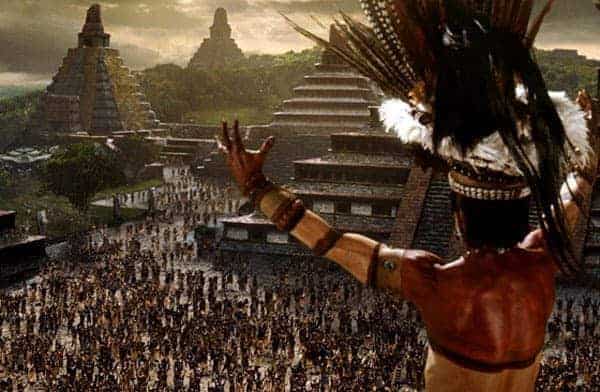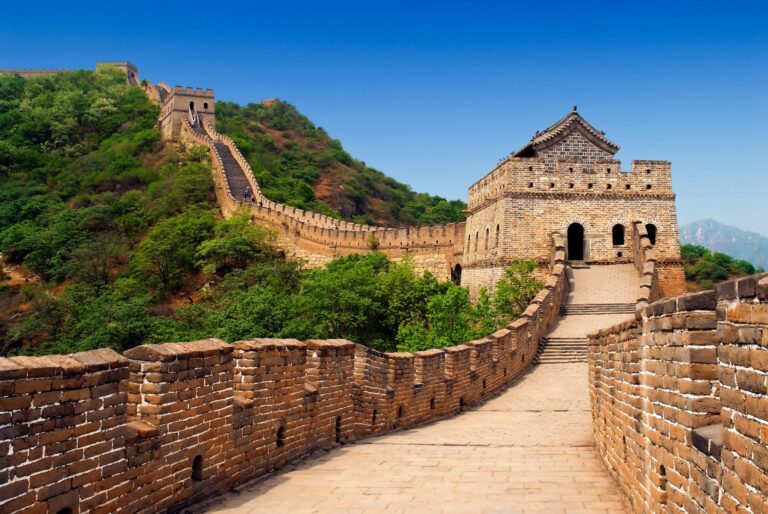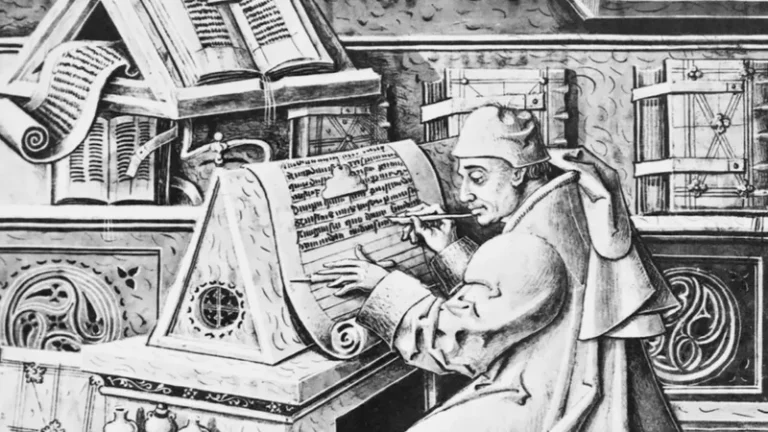Venture into the enchanting world of the past with us as we traverse the remnants of the Pre-Columbian Civilizations in the Americas. 🌎 These civilizations, prospering long before the arrival of European explorers, have left behind architectural marvels and sophisticated artifacts that continue to bewitch modern-day historians and archeologists. Immerse yourself in this captivating journey as we unfurl the mysteries of the ancient wonders that still stand testament to the ingenuity and prowess of these forgotten civilizations. From the colossal pyramids of the Maya and Aztec, to the intricate stone constructions of the Inca, we delve into the remarkable world of these advanced societies and their enduring legacies. Experience the awe-inspiring complexity of these civilizations as we examine their rich culture and groundbreaking achievements. 🏺🌽 These ancient societies were not only architects and engineers of extraordinary skill, but also keen astronomers, efficient farmers, and creators of vibrant art and literature. We explore their contributions to modern society and their lasting impact on the world as we know it today. However, these civilizations were not just about monumental structures and significant advancements. They were societies teeming with individuals, each playing a part in the vast tapestry of Pre-Columbian life. We offer an intimate glimpse into the everyday life of these ancient people, their customs, beliefs, and the fascinating tales woven into their history. Brace yourself for an enlightening expedition through time as we uncover the marvels of Pre-Columbian Civilizations in the Americas. This is an odyssey through ancient wonders, a narrative of human resilience, innovation, and the indomitable spirit of discovery that still reverberates in the heartbeat of these ancient lands. So, hold on tight and prepare to be enthralled, as we embark on this compelling journey back in time. 🕰️🏞️
The Intricate Societies of the Mayan Civilization
Diving into the world of the ancient civilizations of the Americas, the first that comes to mind is the Mayan civilization — one of the most complex and enduring societies of pre-Columbian history. Flourishing between 2600 B.C. and A.D. 1524, the Mayans established a wide-reaching civilization that stretched across present-day southern Mexico, Guatemala, Belize, Honduras, and El Salvador. Their profound influence on art, science, religion, and politics has left an indelible mark on the cultural history of the Americas.
The Mayan society was not a unified empire, but rather a collection of city-states, each governed by its own king and elite class. Major cities such as Tikal, Palenque, Copán, e Chichen Itzá functioned as powerful cultural and religious centers. These cities often interacted through trade, alliances, and warfare, forming a dynamic and interconnected regional system.
One of the most remarkable aspects of Mayan society was its advanced knowledge in science and mathematics. They developed an accurate calendar system based on astronomical observations, including the famous Long Count calendar, which tracked time over thousands of years. Their understanding of celestial movements was so precise that they could predict solar and lunar eclipses with impressive accuracy.
In addition to their astronomical achievements, the Mayans made significant contributions to written language. They created one of the most advanced writing systems in the ancient world, consisting of intricate glyphs representing both phonetic sounds and whole words. These glyphs were inscribed on monuments, stelae, pottery, and in codices made from bark paper, allowing the preservation of historical events, religious rituals, and royal genealogies.
The Mayans were also master builders. Their cities featured towering temples, ceremonial platforms, palaces, e ball courts, many of which were elaborately decorated with carvings and hieroglyphic inscriptions. One of the most iconic structures is El Castillo at Chichen Itzá — a pyramid dedicated to the feathered serpent god Kukulkan, engineered in alignment with celestial events such as the equinox.
Religion permeated every aspect of Mayan life. Their polytheistic belief system included gods associated with the sun, moon, rain, maize, and the underworld. Rituals often involved music, dance, offerings, and in some cases, bloodletting or human sacrifice, believed to nourish the gods and ensure cosmic balance.
Despite political upheavals and regional conflicts, the Mayan civilization endured for nearly three millennia. Even after the Classic Period collapse around the 9th century, many Mayan communities continued to thrive, particularly in the highlands of Guatemala, where Mayan culture and language remain vibrant to this day.
The legacy of the Mayans endures not only in their monumental ruins but also in the living traditions of their descendants. Their achievements continue to captivate historians, archaeologists, and travelers alike, reminding us of a civilization that combined scientific precision, architectural brilliance, and rich spiritual life in truly extraordinary ways.
Architectural Prowess
The Mayans are known for their intricate and breathtaking architecture. They constructed towering temples, large royal palaces, and ornate sculptural works. One of the most famous Mayan architectural sites is the city of Chichen Itza. This site includes the impressive El Castillo, or Kukulkan Pyramid, which stands at 24 meters high.
Advancements in Writing and Astronomy
The Mayans were also pioneers in the field of writing. They developed one of the most sophisticated writing systems in the ancient world, using a complex system of hieroglyphics. In addition, they made significant advancements in astronomy and even had their own calendar system.
The Powerful Empire of the Aztecs
Moving further into the heart of ancient Mexico, we encounter the Aztec civilization, one of the most formidable and influential empires of pre-Columbian America. Flourishing between 1345 and 1521 AD, the Aztecs established a powerful and expansive empire centered in the Valley of Mexico, with their capital city, Tenochtitlán, built on an island in Lake Texcoco — the site of present-day Mexico City.
The Aztecs were renowned for their military prowess, which played a crucial role in the expansion of their empire. Through strategic warfare and alliances, they formed the Triple Alliance with the city-states of Texcoco e Tlacopan, allowing them to dominate surrounding regions. Conquered cities were required to pay tribute in the form of goods, labor, and captives, contributing to the wealth and power of the empire.
Their society was highly organized, featuring a complex political and social structure. At the top was the tlatoani, or emperor, who held absolute authority and was believed to be chosen by the gods. Below him were nobles, priests, and warriors, followed by merchants, artisans, farmers, and slaves. Education was valued, and children from all social classes attended schools, where they were trained in history, religion, warfare, and civic duties.
Religion was central to Aztec life, deeply woven into their governance and daily rituals. They believed in a pantheon of gods who controlled every aspect of the natural and spiritual world. Chief among them was Huitzilopochtli, the god of the sun and war, to whom they dedicated countless ceremonies. Human sacrifice was a vital religious practice, believed to sustain the sun and preserve cosmic order. Though gruesome by modern standards, these acts were deeply rooted in the Aztec worldview and cosmology.
Economically, the Aztecs excelled in agriculture and trade. They engineered chinampas, or floating gardens, which allowed them to grow crops on shallow lake beds, maximizing agricultural output in a challenging environment. Their markets were bustling hubs of commerce, where goods like cacao, textiles, obsidian, and feathers were exchanged.
Despite their strength, the Aztec Empire fell swiftly after the arrival of Spanish conquistadors led by Hernán Cortés. However, the legacy of the Aztecs endures — through surviving codices, archaeological remains, and the cultural influence visible in modern Mexican identity.
Social Hierarchy and Economy
The Aztec society was highly structured, with a strict social hierarchy. At the top were the emperor and nobility, followed by warriors, merchants, and the common people. The Aztec economy was largely based on agriculture, and they developed complex irrigation systems for farming.
Religion and Human Sacrifice
Religion played a central role in Aztec society. The Aztecs worshipped numerous gods, and their religious practices included elaborate ceremonies and human sacrifices, which they believed were necessary to appease the gods and ensure the survival of their civilization.
The Enigmatic Inca Empire
Further south, in the highlands of Peru, the Inca Empire thrived from the 13th to the 16th century. The Incas are known for their complex administrative system and impressive architectural feats.
Administrative Structure
The Inca Empire was divided into four provinces, each governed by a high-ranking noble. This administrative structure allowed the Incas to effectively manage their vast territory.
Architectural Feats
O Incas were true master builders, whose architectural accomplishments continue to amaze engineers, historians, and travelers to this day. Their constructions were not only aesthetically impressive but also highly functional, often adapted with precision to the rugged and mountainous terrain of the Andes. Among their most iconic achievements stands Machu Picchu, a breathtaking city perched atop a mountain ridge, believed to have been a royal estate or sacred religious site. Hidden for centuries and rediscovered in the early 20th century, Machu Picchu showcases the Incas’ advanced architectural vision, with finely cut stones, agricultural terraces, and sacred temples integrated seamlessly into the natural landscape.
But the Incas’ brilliance extended far beyond this singular marvel. They developed an extensive network of roads, known as the Qhapaq Ñan, spanning over 40,000 kilometers and connecting distant regions of the empire. These roads crossed deserts, mountains, and valleys, often featuring suspension bridges made of woven grass and stone staircases carved into cliffs.
They also constructed fortresses, como Sacsayhuamán, near Cusco, with massive stone walls built from precisely cut and fitted blocks—some weighing over 100 tons—assembled without mortar and still standing today.
Additionally, the Incas were pioneers in hydraulic engineering. They designed sophisticated irrigation systems, canals, e fountains to supply water to agricultural terraces and urban centers. Their ability to control and distribute water effectively allowed agriculture to flourish even in high-altitude regions with challenging climates.
Contributions to Modern Civilization
These pre-Columbian civilizations made significant contributions to modern civilization. Their achievements in architecture, writing, astronomy, and social organization continue to inspire and inform us today.
Legacy in Architecture
The architectural achievements of these civilizations have withstood the test of time. The ruins of their cities and temples are a testament to their architectural ingenuity and their understanding of mathematics and geometry. Their precision, durability, and alignment with celestial events remain subjects of admiration and study.
Influence on Modern Society
The social and political structures of these civilizations influenced the development of modern societies. Their advancements in writing and astronomy laid the groundwork for later scientific discoveries. Today, the ruins of their cities and the artifacts of their cultures provide a window into the rich history and heritage of the Americas.
Conclusion, the pre-Columbian civilizations of the Americas were marvels of their time. Their advancements in various fields have left a lasting legacy, and their ruins and artifacts continue to fascinate and inspire us today.
In conclusion, the exploration of pre-Columbian civilizations in the Americas underscores the marvels of these ancient societies. From the awe-inspiring Mayan temples to the intricate Incan road networks, these wonders underscore the sophistication and ingenuity of these societies long before European contact. Their contributions to architecture, agriculture, astronomy, and art continue to inspire and captivate. Despite facing numerous challenges, including hostile environments and limited resources, they thrived, leaving behind indelible marks of their cultures and civilizations. The rediscovery and study of these pre-Columbian treasures is a testament to the richness of the human experience and the diversity of cultural expression throughout history. In the modern era, these ancient marvels serve as a powerful reminder of our shared human heritage and the imperative to preserve and understand our past. As we continue to delve into the history of these pre-Columbian civilizations, we are undoubtedly poised to uncover more of their extraordinary achievements, enriching our collective knowledge and appreciation of these ancient American societies.
Conclusão
Exploring the civilizations of the Maya, Aztec, and Inca reveals the immense cultural, scientific, and architectural wealth that flourished in the Americas long before European contact. These societies were not only builders of stone cities and pyramids, but also of knowledge, identity, and resilience. Their legacies continue to shape the cultural fabric of the modern world, reminding us of humanity’s shared ingenuity and creative spirit. By studying and preserving these ancient civilizations, we honor their contributions and ensure that their stories endure through generations to come.




